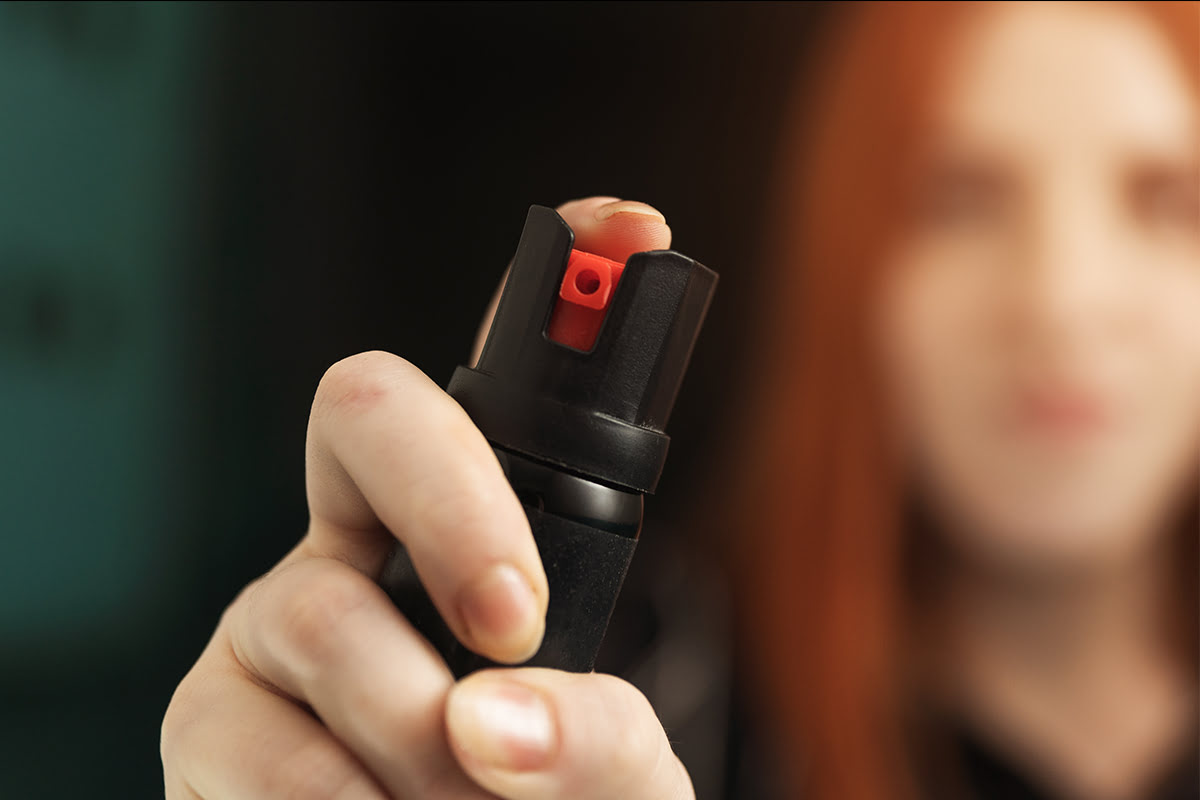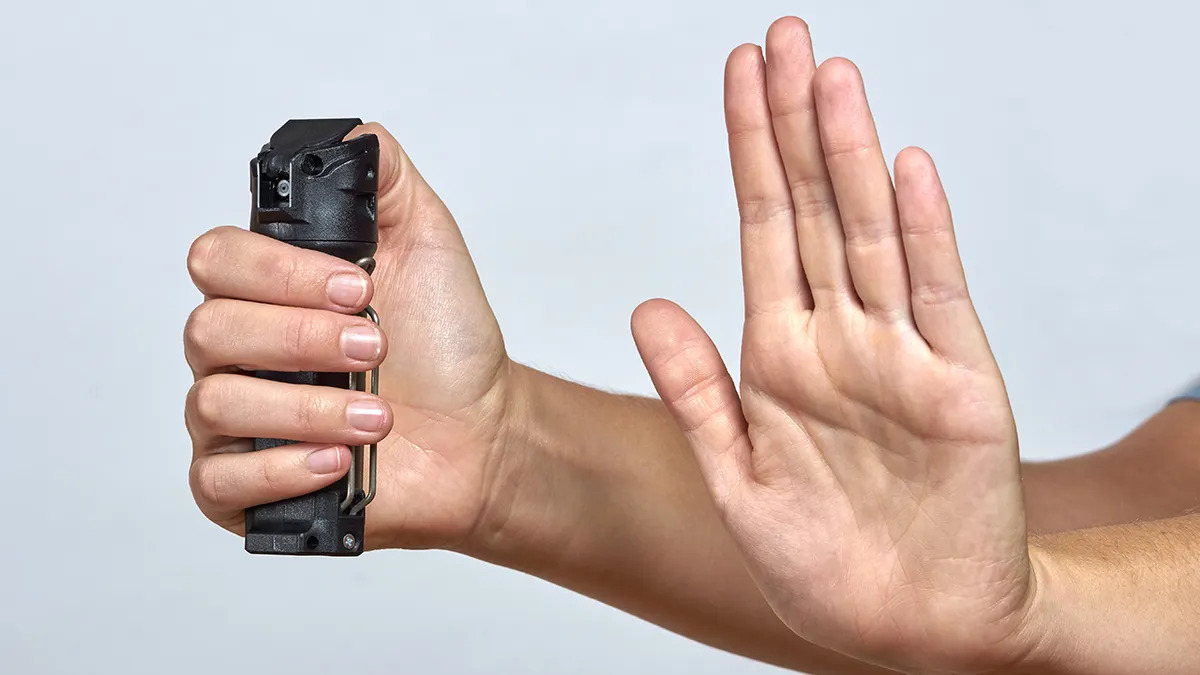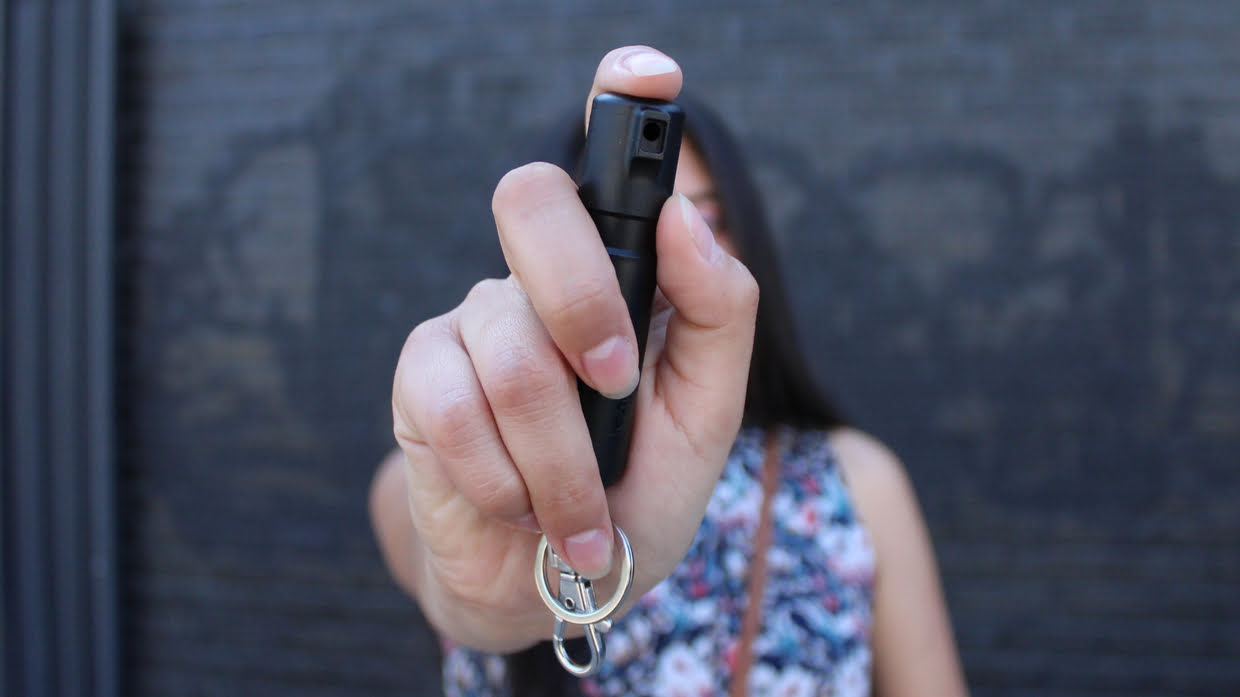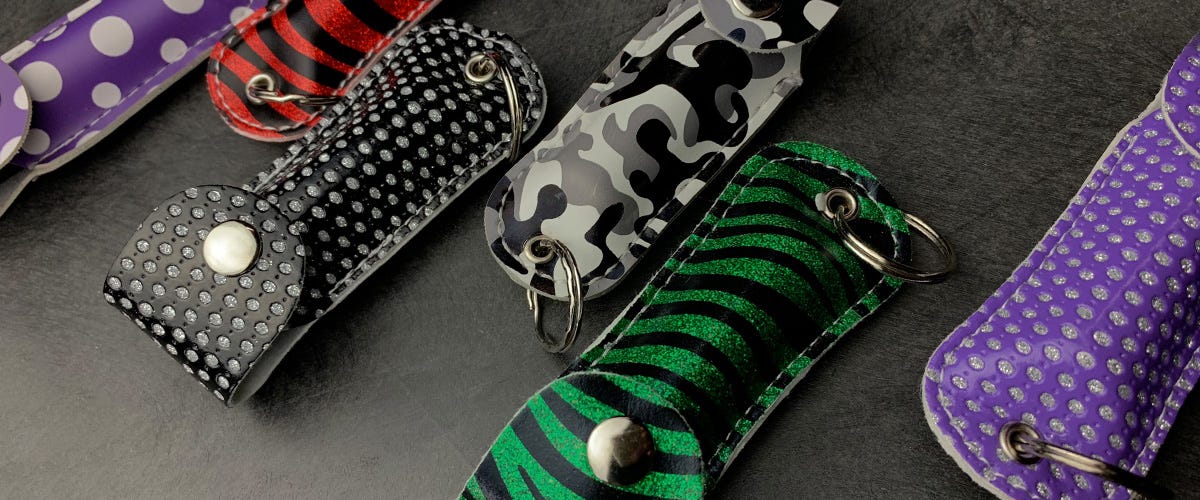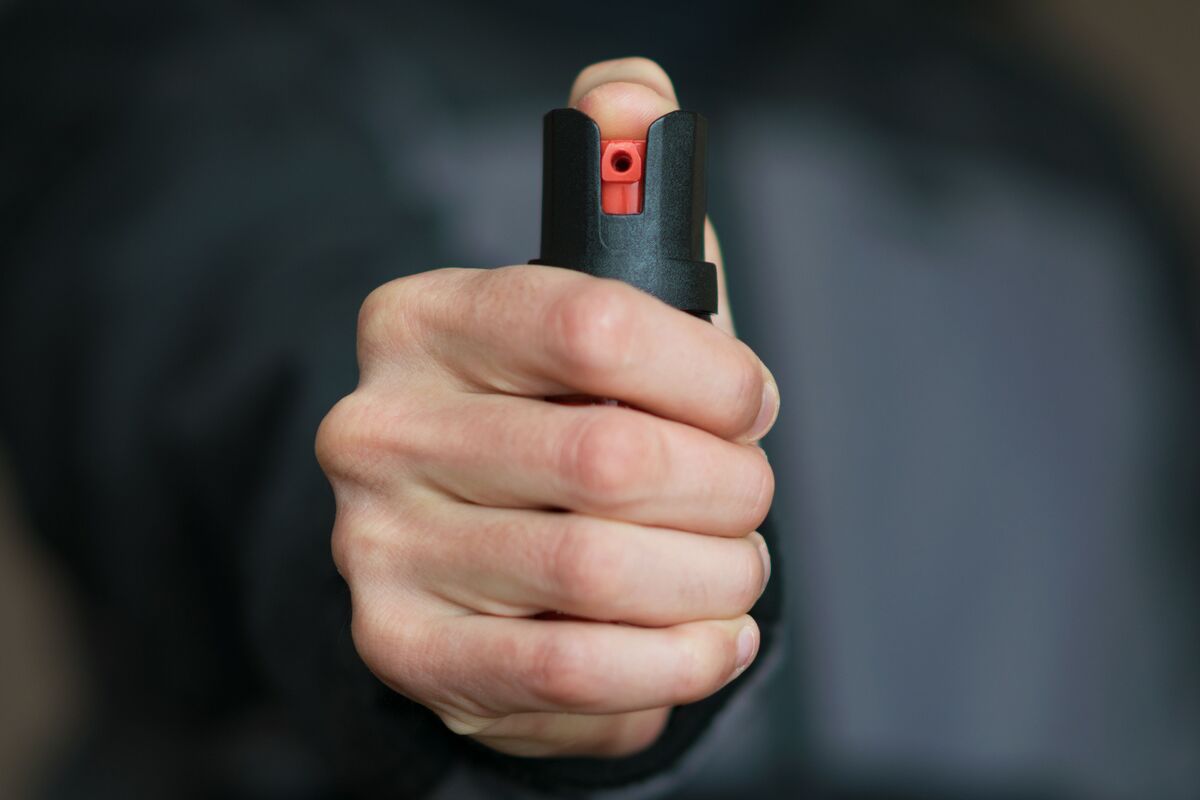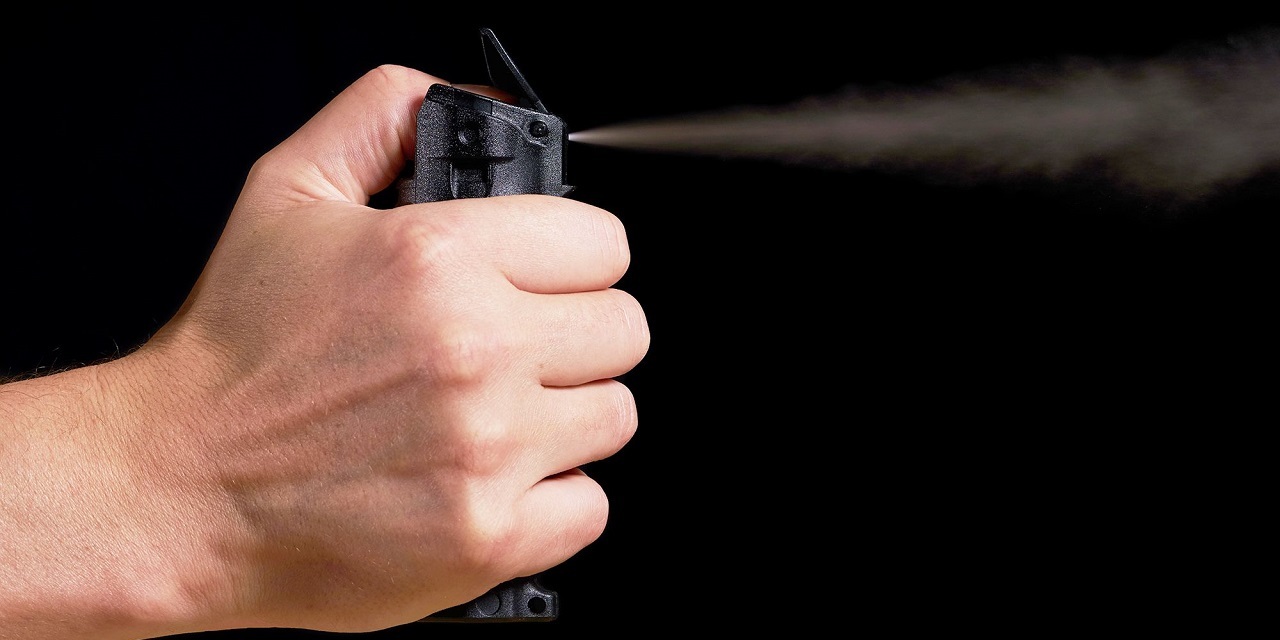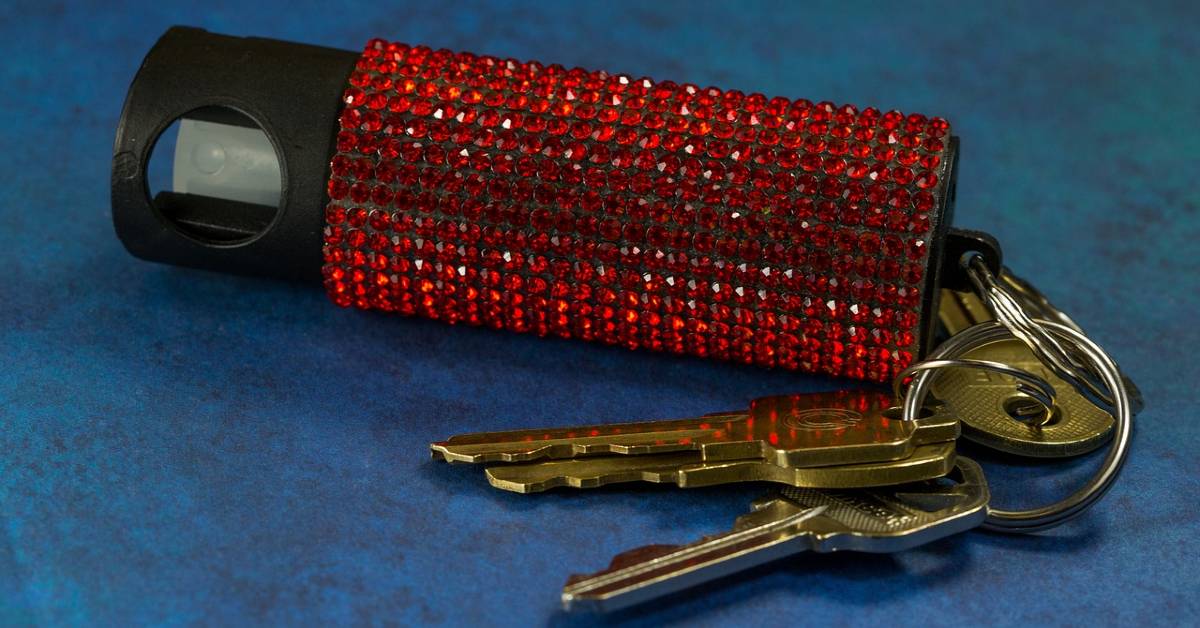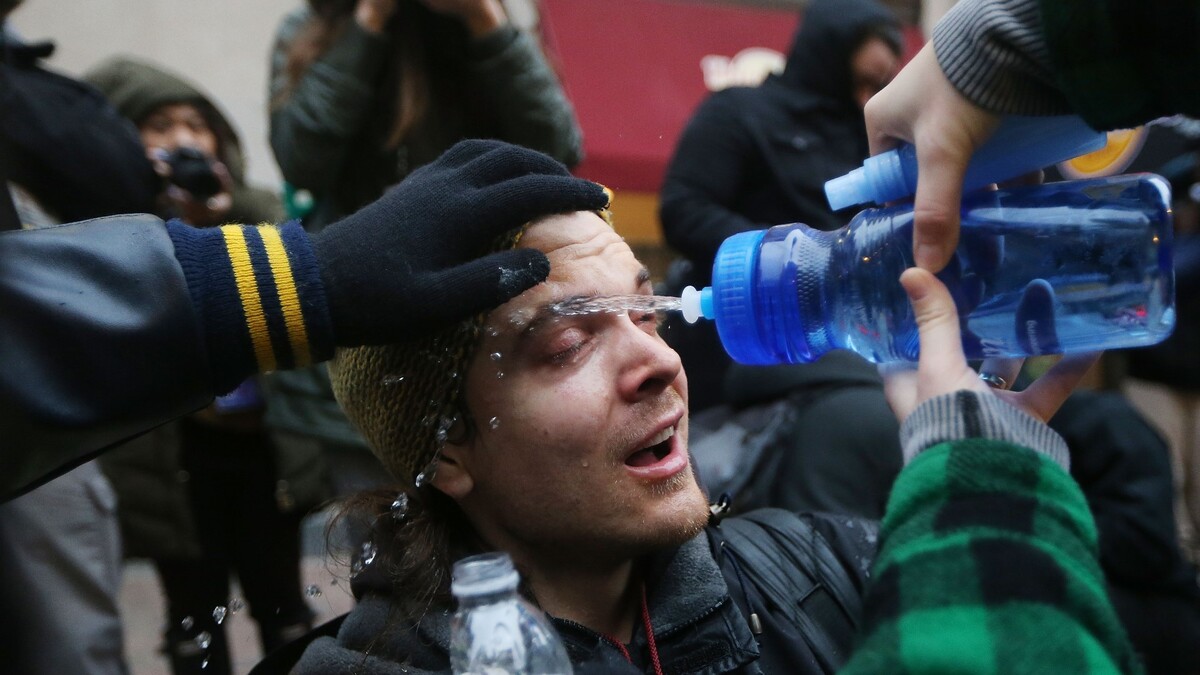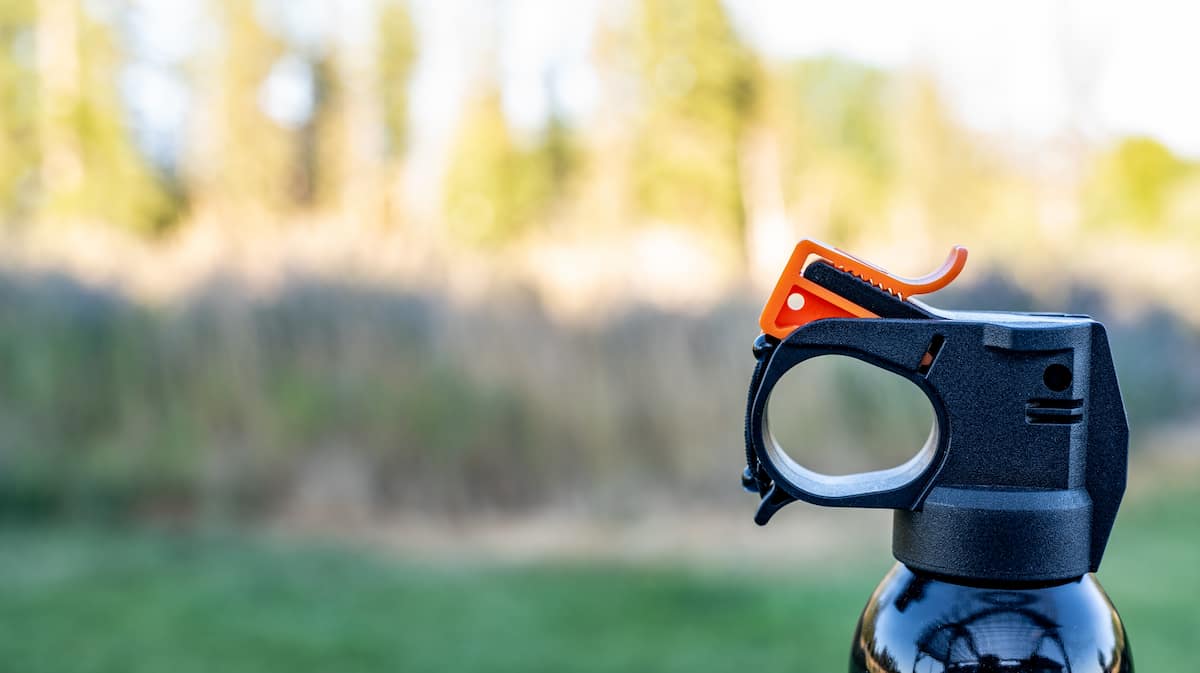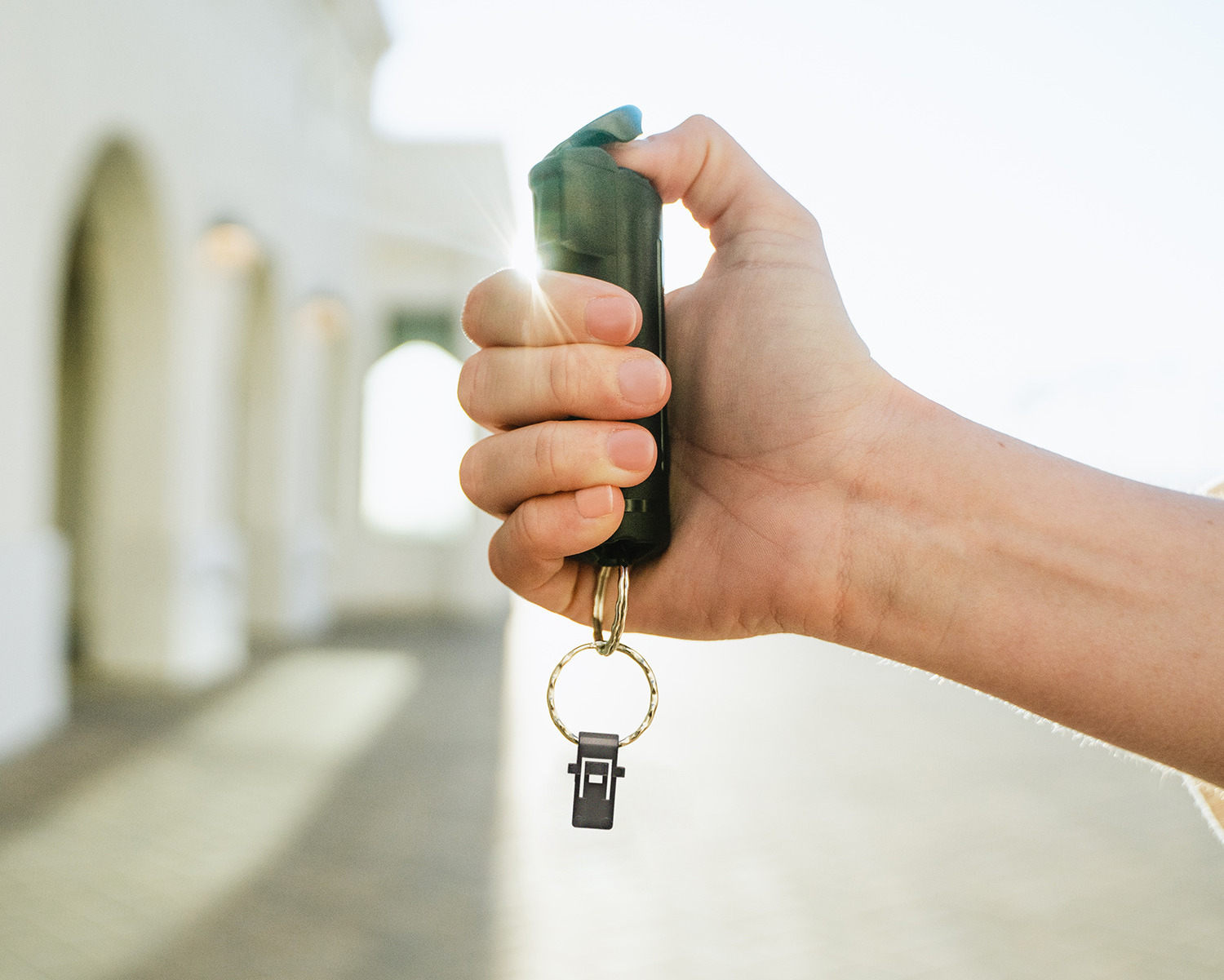Home>Home Security and Surveillance>How To Get Pepper Spray Out Of Eyes
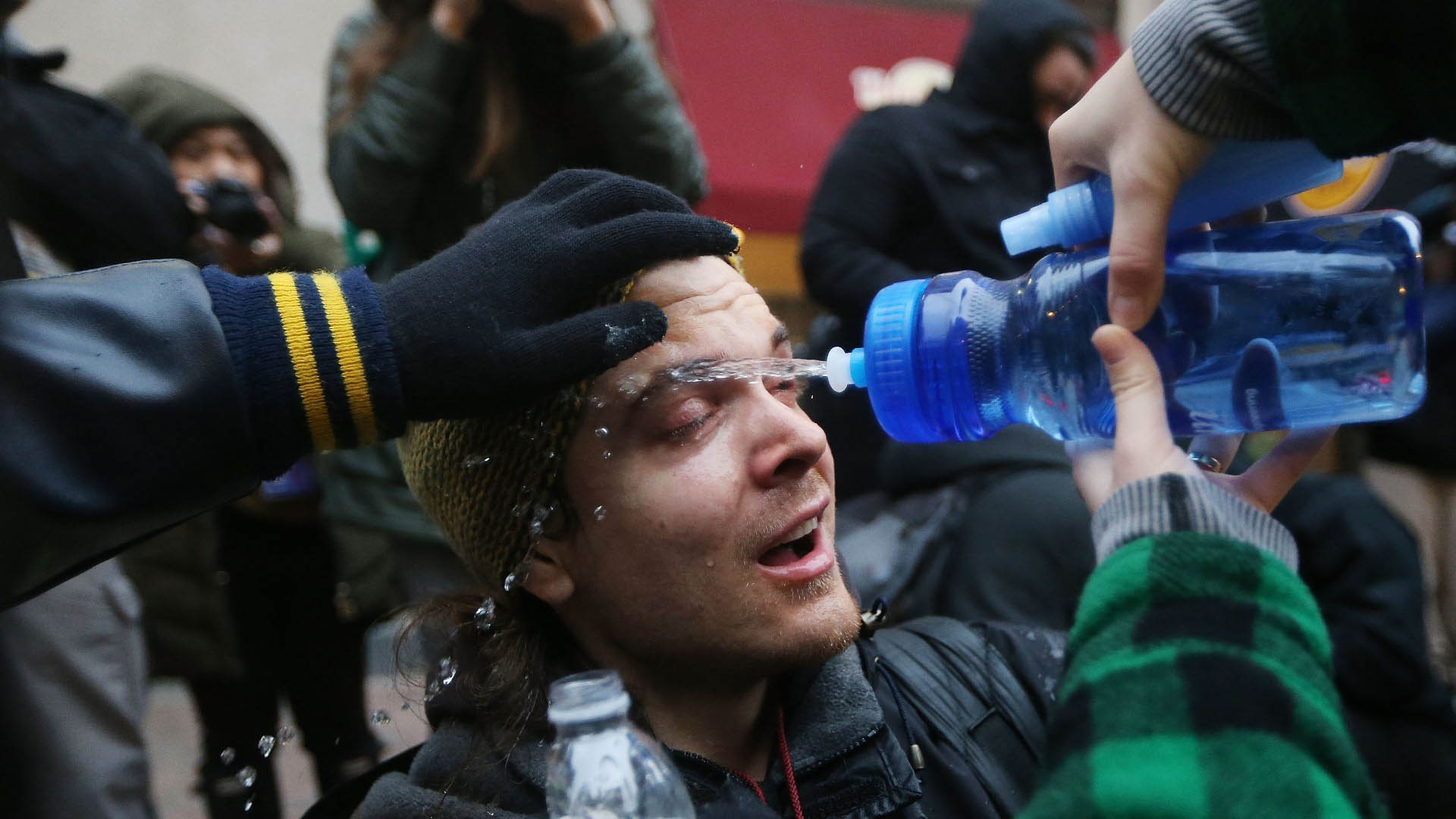

Home Security and Surveillance
How To Get Pepper Spray Out Of Eyes
Modified: March 7, 2024
Discover effective home remedies to safely remove pepper spray from your eyes. Protect yourself with home security and surveillance options for ultimate peace of mind.
(Many of the links in this article redirect to a specific reviewed product. Your purchase of these products through affiliate links helps to generate commission for Storables.com, at no extra cost. Learn more)
Introduction
Personal safety and security are paramount concerns for individuals and families alike. In an ever-changing world, it is crucial to take proactive steps to safeguard ourselves and our loved ones. One effective tool in this regard is pepper spray, a non-lethal self-defense option that can provide peace of mind and a sense of empowerment.
Pepper spray products have gained popularity due to their convenience, affordability, and ease of use. Whether it’s for personal protection during evening walks, late-night commutes, or even as a deterrent against potential threats at home, pepper spray offers a simple yet effective solution.
In this article, we will explore what pepper spray is, examine the potential dangers associated with its use, and discuss how to handle the situation if the spray comes into contact with the eyes. We will also outline immediate actions to take, provide step-by-step instructions on flushing the eyes, and offer advice on seeking medical attention if needed. Finally, we’ll discuss preventive measures to help ensure your safety.
It’s important to note that while pepper spray can be a valuable tool in self-defense, it should always be used responsibly and within the confines of the law. Additionally, I am not a medical professional, and the information provided here is for educational purposes only. If you have any concerns or experience any adverse effects, please consult a healthcare professional.
Now, let’s dive into the world of pepper spray and learn how to handle the situation if the spray comes into contact with the eyes.
Key Takeaways:
- Pepper spray is a helpful self-defense tool, but it’s crucial to know how to handle it if it gets in your eyes. Stay calm, flush your eyes with water, and seek medical help if needed to minimize the effects.
- Preventing the need for pepper spray is important. Stay aware of your surroundings, consider self-defense training, and secure your home to enhance personal safety and reduce potential risks.
Read more: What To Do For Pepper Spray In Eyes
What is Pepper Spray?
Pepper spray is a non-lethal self-defense tool that is designed to temporarily incapacitate an individual by causing intense irritation to the eyes, skin, and respiratory system. It is typically composed of a chemical called Oleoresin Capsicum (OC), derived from hot peppers.
The active ingredient in pepper spray is capsaicin, which is derived from chili peppers. When sprayed onto an assailant, capsaicin causes an immediate burning sensation, swelling of the eyelids, temporary blindness, and difficulty breathing. The effects can last for several minutes, providing the victim with a window of opportunity to escape or seek help.
Pepper spray comes in various forms, such as aerosol cans, keychain units, and even disguised as everyday objects like pens or lipstick. These different forms offer convenience and accessibility, allowing individuals to carry pepper spray discreetly and have it readily available when needed.
It is important to note that pepper spray is legal for use in self-defense in many jurisdictions, but laws and regulations can vary. It is essential to familiarize yourself with the specific laws in your area and ensure that you are using pepper spray responsibly and within the confines of the law.
Pepper spray should only be used in situations where there is a genuine threat to personal safety and after considering other de-escalation or escape strategies. It is important to emphasize that pepper spray should not be used as a form of aggression or for any other purpose than self-defense.
Now that we have a better understanding of what pepper spray is, let’s explore some of the potential dangers associated with its use.
Potential Dangers of Pepper Spray
While pepper spray can be an effective self-defense tool, it is essential to be aware of the potential dangers and risks associated with its use. Understanding these risks can help individuals make informed decisions and use pepper spray responsibly.
1. Overspray: One of the primary dangers of using pepper spray is the risk of unintentionally spraying innocent bystanders or oneself. In high-stress situations, it can be challenging to aim accurately, leading to an increased chance of unintended targets being exposed to the spray. It is crucial to practice proper technique and be mindful of your surroundings when using pepper spray.
2. Allergic Reactions: Some individuals may have allergies or sensitivities to the active ingredient found in pepper spray. While rare, this can result in severe allergic reactions, including difficulty breathing, swelling, or anaphylaxis. If you or someone you know has a known sensitivity to capsaicin, it is advisable to seek alternative self-defense options.
3. Pre-existing Medical Conditions: Pepper spray can have severe effects on individuals with pre-existing respiratory conditions, such as asthma or chronic obstructive pulmonary disease (COPD). The inflammation and irritation caused by the spray may exacerbate their symptoms and lead to difficulty breathing. It is crucial for individuals with such conditions to consult with their healthcare professionals before considering pepper spray as a self-defense option.
4. Overreliance on Pepper Spray: While pepper spray can be a valuable tool, it is important not to become solely reliant on it for personal safety. It is essential to develop a comprehensive self-defense plan, including awareness of your surroundings, employing de-escalation techniques, and seeking professional self-defense training. Pepper spray should be seen as one element within a broader strategy.
5. Legal Considerations: Although pepper spray is legal for self-defense in many jurisdictions, it is crucial to be cognizant of local laws and regulations. Some areas may have restrictions on the strength or size of pepper spray canisters or may require permits for possession or use. Ignoring these legal considerations can lead to legal troubles and jeopardize your safety. Make sure to research and understand the laws in your area before purchasing or using pepper spray.
By being aware of these potential dangers, individuals can make informed choices when it comes to using pepper spray as a self-defense tool. It is important to weigh the benefits against the risks and ensure proper training and education to use it responsibly.
Now that we have explored the risks, let’s delve into how pepper spray affects the eyes and what immediate actions should be taken in case of exposure.
How Pepper Spray Affects the Eyes
When pepper spray comes into contact with the eyes, it can cause immediate and intense irritation. The active ingredient, capsaicin, stimulates pain receptors in the eyes, leading to a range of unpleasant symptoms. Understanding how pepper spray affects the eyes is crucial in effectively addressing the situation and minimizing its impact.
1. Burning Sensation: The most common and immediate effect of pepper spray on the eyes is a severe burning sensation. This burning can be extremely painful and may cause intense discomfort and distress for the affected individual.
2. Swelling and Irritation: Pepper spray has the potential to cause swelling of the eyelids and surrounding tissues. This swelling can obstruct vision, making it difficult for the person affected to see clearly and potentially leading to temporary blindness.
3. Excessive Tearing: When exposed to pepper spray, the eyes may produce excessive tears as a protective mechanism. While tears can help flush out the irritants, they can also exacerbate the burning sensation and make it challenging to keep the eyes open.
4. Redness and Bloodshot Eyes: The capsaicin in pepper spray can cause the blood vessels in the eyes to dilate, resulting in redness and bloodshot appearance. This redness may be accompanied by inflammation and irritation of the surrounding tissues.
It is important to note that these effects are temporary and typically subside within a matter of minutes. However, during this time, it is crucial to take immediate actions to minimize the discomfort and prevent further complications.
In the next section, we will explore the steps you should take immediately after exposure to pepper spray to alleviate the symptoms and ensure proper care for your eyes.
Immediate Actions to Take
If you or someone you know has been exposed to pepper spray and it has come into contact with the eyes, it is crucial to take immediate action to minimize the effects and ensure proper care. Here are the steps you should follow:
- Stay Calm: It is understandable to feel panicked or anxious when exposed to pepper spray. However, it is important to stay as calm as possible to make rational decisions and effectively address the situation.
- Move to an Open Area: If possible, move to a well-ventilated area away from the source of the pepper spray. Fresh air can help alleviate some of the symptoms and make it easier to breathe.
- Do Not Rub Your Eyes: As tempting as it may be, avoid rubbing your eyes. Rubbing can further irritate the eye and spread the pepper spray to other areas of your face.
- Blink Rapidly: Blinking rapidly can help promote tears, which can naturally flush out the irritants. This may provide temporary relief and aid in the recovery process.
- Remove Contact Lenses: If you are wearing contact lenses, remove them immediately. The pepper spray can adhere to the lenses, prolonging the exposure and causing more discomfort.
- Keep Your Eyes Open: Although it may be challenging, try to keep your eyes open to allow tears to flush out the irritants. Closing your eyes can trap the pepper spray against the surface of the eye, prolonging the effects.
- Wash Your Hands: Before attempting any further actions, make sure to thoroughly wash your hands to avoid spreading the pepper spray to other parts of your body or face.
It is important to remember that these immediate actions may provide initial relief but are not a substitute for proper medical care. In the next sections, we will discuss how to flush the eyes and provide instructions on using a neutralizing agent if needed. Seeking professional medical attention is highly advised after experiencing exposure to pepper spray.
Rinse eyes with cold water for at least 15 minutes to flush out pepper spray. Avoid rubbing eyes, as it can spread the spray. If possible, use a saline solution to help neutralize the effects.
Flushing the Eyes
Flushing the eyes is an essential step in minimizing the effects of pepper spray and removing the irritants from the eye surface. It is important to perform this action as soon as possible after exposure. Here is a step-by-step guide on how to flush the eyes:
- Find a Clean Water Source: Locate a clean source of running water, such as a faucet or shower. Ensure that the water is at a comfortable temperature, neither too hot nor too cold.
- Tilt Your Head: Tilt your head slightly downward to avoid the water from flowing into the unaffected eye or your nasal passages.
- Use Your Fingers: Gently use your fingers to hold open the affected eye’s eyelids. This will help the water reach the surface of the eye.
- Start Flushing: Allow the water to flow over your eye, starting from the inner corner. Let it run across the eye’s surface and towards the outer corner. Continue this for about 15-20 minutes.
- Blink and Rotate Your Eye: While flushing, blink your eye repeatedly to help wash away any remaining irritants. You can also rotate your eye in different directions to ensure thorough flushing.
- Repeat if Necessary: If the irritation persists after the initial flushing, repeat the process multiple times until the symptoms start to subside.
- Dispose of Contaminated Water Safely: After flushing, ensure that the water used in the process is disposed of safely. Do not let it come into contact with your skin or contaminate any other surfaces.
It is essential to remember that flushing the eyes with water can provide temporary relief, but it may not completely eliminate all the effects of pepper spray. Seeking professional medical attention is critical to ensure proper care and evaluation of any potential complications.
In the next section, we will discuss the use of a neutralizing agent and when it may be necessary.
Using a Neutralizing Agent
In some instances, flushing the eyes with water may not be enough to alleviate the effects of pepper spray. In such cases, a neutralizing agent can be used to help counteract the irritation caused by the pepper spray. Here is a step-by-step guide on how to use a neutralizing agent:
- Choose an Appropriate Neutralizing Agent: There are various neutralizing agents available, such as a solution of one-part baking soda and six parts water or a saline solution specifically designed for eye irrigation. Ensure that the solution is safe for use in the eyes and does not contain any ingredients that may further irritate the eye.
- Prepare the Solution: Follow the instructions provided with the neutralizing agent to prepare the solution. It is important to mix it properly and ensure that it is at the appropriate temperature.
- Administer the Solution: With clean hands, hold your affected eye open using your fingers. Gently pour a steady stream of the neutralizing agent over your eye, ensuring that it flows across the surface. Allow the solution to flow for about 15-20 seconds.
- Blink and Rotate Your Eye: While the neutralizing agent is in contact with your eye, blink your eye gently to help distribute the solution. You can also rotate your eye in different directions to ensure thorough coverage.
- Flush with Water: After using the neutralizing agent, flush your eye with water as mentioned in the previous section. This will help remove any remnants of the solution and flush out the irritants more effectively.
- Repeat if Necessary: If the irritation persists even after using the neutralizing agent, repeat the process multiple times until the symptoms start to subside. It is important to follow the instructions provided with the specific neutralizing agent regarding the frequency of use.
- Seek Medical Attention: It is highly advisable to seek professional medical attention after using a neutralizing agent, especially if the symptoms persist or worsen. Medical professionals can provide a thorough examination of the eyes and offer appropriate treatment if needed.
Using a neutralizing agent can provide additional relief and help neutralize the effects of pepper spray on the eyes. However, it is crucial to remember that seeking medical attention is essential for proper evaluation and care.
In the next section, we will discuss when and why it is important to seek medical attention after exposure to pepper spray.
Seeking Medical Attention
After experiencing exposure to pepper spray and taking immediate actions to alleviate the symptoms, it is crucial to seek medical attention, especially if the effects persist or worsen. Here are some important reasons why seeking medical attention is important:
- Evaluation of Eye Health: Medical professionals can conduct a thorough examination of the eyes to assess the extent of any potential damage or complications caused by the pepper spray. They can provide a more accurate diagnosis and recommend appropriate treatment.
- Management of Symptoms: Medical professionals can prescribe medications or treatments to help alleviate the lingering effects of pepper spray exposure, such as eye drops to reduce inflammation, ointments to relieve discomfort, or pain relievers to manage any lingering pain.
- Prevention of Infections: Exposure to pepper spray can make the eyes more susceptible to infections. Seeking medical attention allows healthcare professionals to monitor the eyes and provide necessary preventive measures or treatments to minimize the risk of infections.
- Identifying Underlying Conditions: In some cases, exposure to pepper spray may exacerbate pre-existing eye or respiratory conditions. Medical professionals can evaluate and provide appropriate care for these conditions, helping manage any potential complications.
- Documenting the Incident: Seeking medical attention creates a documented record of the incident, which can be useful for legal purposes or if the effects of pepper spray exposure persist and result in long-term complications. It is important to keep copies of any medical reports or documentation related to the incident.
- Peace of Mind: When it comes to your health, seeking medical attention offers peace of mind. Medical professionals are trained to evaluate and treat eye-related issues, and their expertise can provide reassurance throughout the recovery process.
Remember, I am not a medical professional, and the information provided here is for educational purposes only. If you or someone you know has been exposed to pepper spray, it is always best to consult with a healthcare professional for proper evaluation and guidance.
In the final section, we will discuss preventive measures to help ensure personal safety and minimize the need for using pepper spray.
Preventive Measures
While pepper spray can be a useful tool in self-defense, it is essential to prioritize preventive measures to minimize the need for its use. Taking proactive steps to enhance personal safety can reduce the risk of confrontations and potential dangers. Here are some preventive measures to consider:
- Situational Awareness: Stay alert and be aware of your surroundings at all times. Avoid distractions like excessive phone use or wearing headphones that can hinder your ability to detect potential threats.
- Self-Defense Training: Consider enrolling in self-defense classes or workshops to learn techniques for personal protection. These classes can teach you how to assess and react to potential dangers effectively.
- Secure Your Home: Install adequate home security systems, including alarms, motion sensors, and surveillance cameras. Additionally, reinforce windows and doors to make unauthorized entry more difficult.
- Use Well-Lit Areas: When walking or jogging at night, stick to well-lit and populated areas to minimize the risk of potential assailants. Avoid dimly lit or isolated streets or shortcuts.
- Share Itinerary: Inform a trusted friend or family member about your planned itinerary when traveling alone or going on a hike. Share details such as your destination, expected return time, and any necessary contact information.
- Stay in Groups: Whenever possible, avoid walking alone, especially in unfamiliar or high-risk areas. Stay in groups or pairs as there is safety in numbers.
- Trust Your Instincts: Listen to your gut feelings and intuition. If a situation or person feels unsafe, remove yourself from the situation or seek help immediately.
- Develop Emergency Plans: Have emergency plans in place for various scenarios, such as home invasions or personal attacks. Discuss these plans with family members or loved ones so that everyone is prepared in case of emergencies.
- Stay Updated on Self-Defense Laws: Familiarize yourself with the self-defense laws and regulations in your area. Know your rights and responsibilities when it comes to personal safety and understand what force may be legally used for self-defense.
By implementing these preventive measures, you can create a safer environment for yourself and reduce the likelihood of encountering dangerous situations. Remember, personal safety is a priority, and it is always better to prevent conflicts rather than solely rely on self-defense tools like pepper spray.
As we conclude this article, we hope that the information presented has been informative and helpful. Stay safe, be prepared, and take proactive measures to protect yourself and your loved ones.
Read more: How To Get Glass Out Of Eye
Conclusion
Pepper spray can be a valuable tool in personal safety and self-defense, providing individuals with a sense of empowerment and peace of mind. However, it is essential to understand its proper use, potential dangers, and necessary precautions to ensure both effectiveness and responsible handling.
In this article, we explored what pepper spray is, its active ingredients, and the various forms it comes in. We discussed the potential dangers of pepper spray, including overspray, allergic reactions, and the importance of not solely relying on it for personal safety.
We also delved into how pepper spray affects the eyes, causing intense burning, swelling, and temporary blindness. Immediate actions to take if exposed to pepper spray were highlighted, including staying calm, moving to fresh air, avoiding rubbing the eyes, and flushing them with water.
If the effects persist or worsen, using a neutralizing agent can help counteract the irritation caused by pepper spray. However, seeking medical attention is crucial, as medical professionals can provide a thorough evaluation, manage symptoms, and prevent potential complications.
Preventive measures, such as situational awareness, self-defense training, and securing your home, were also discussed as proactive steps to reduce the need for using pepper spray. By prioritizing personal safety, staying alert, and being prepared, individuals can minimize risks and enhance their overall well-being.
Remember, the information provided in this article is for educational purposes only, and seeking professional advice is always recommended. Additionally, make sure to familiarize yourself with the specific laws and regulations regarding pepper spray and self-defense in your area.
By combining knowledge, preparation, and responsible use, pepper spray can be an effective tool in enhancing personal safety. Stay safe, confident, and empowered as you navigate the world, knowing that you have taken steps to protect yourself and your loved ones.
Frequently Asked Questions about How To Get Pepper Spray Out Of Eyes
Was this page helpful?
At Storables.com, we guarantee accurate and reliable information. Our content, validated by Expert Board Contributors, is crafted following stringent Editorial Policies. We're committed to providing you with well-researched, expert-backed insights for all your informational needs.


